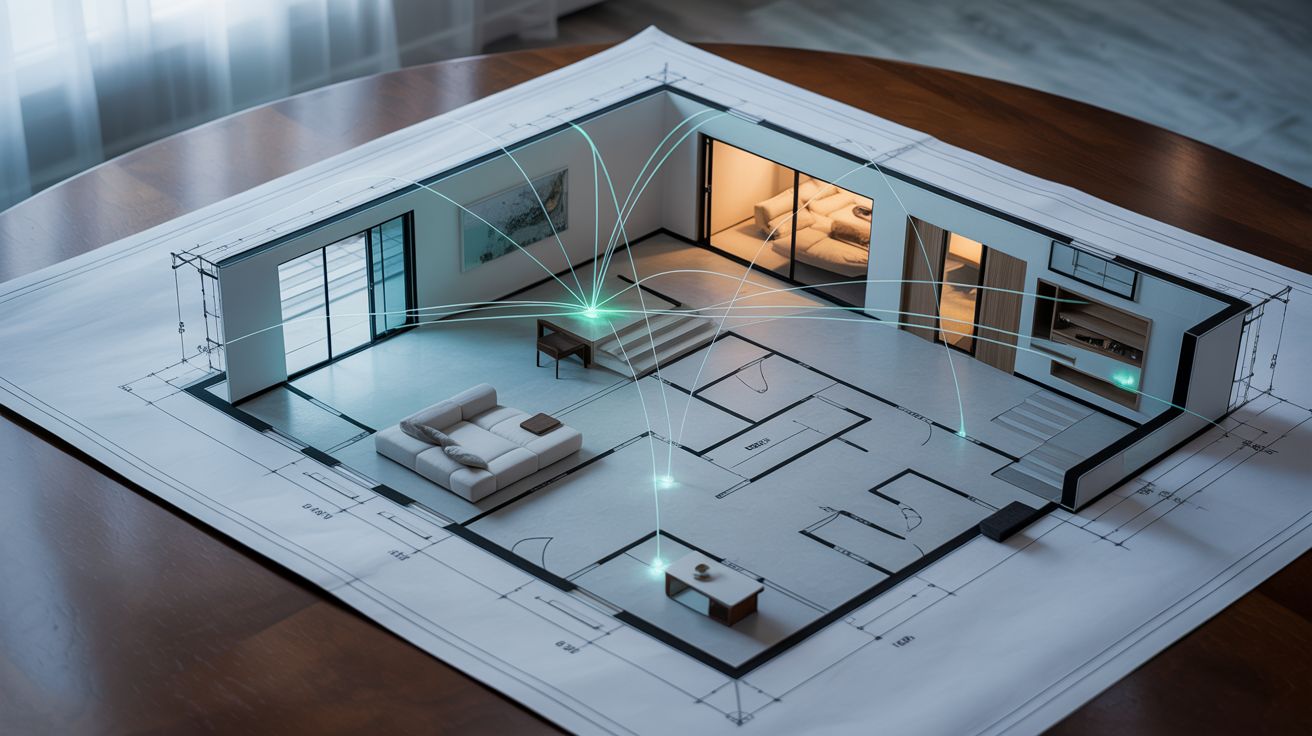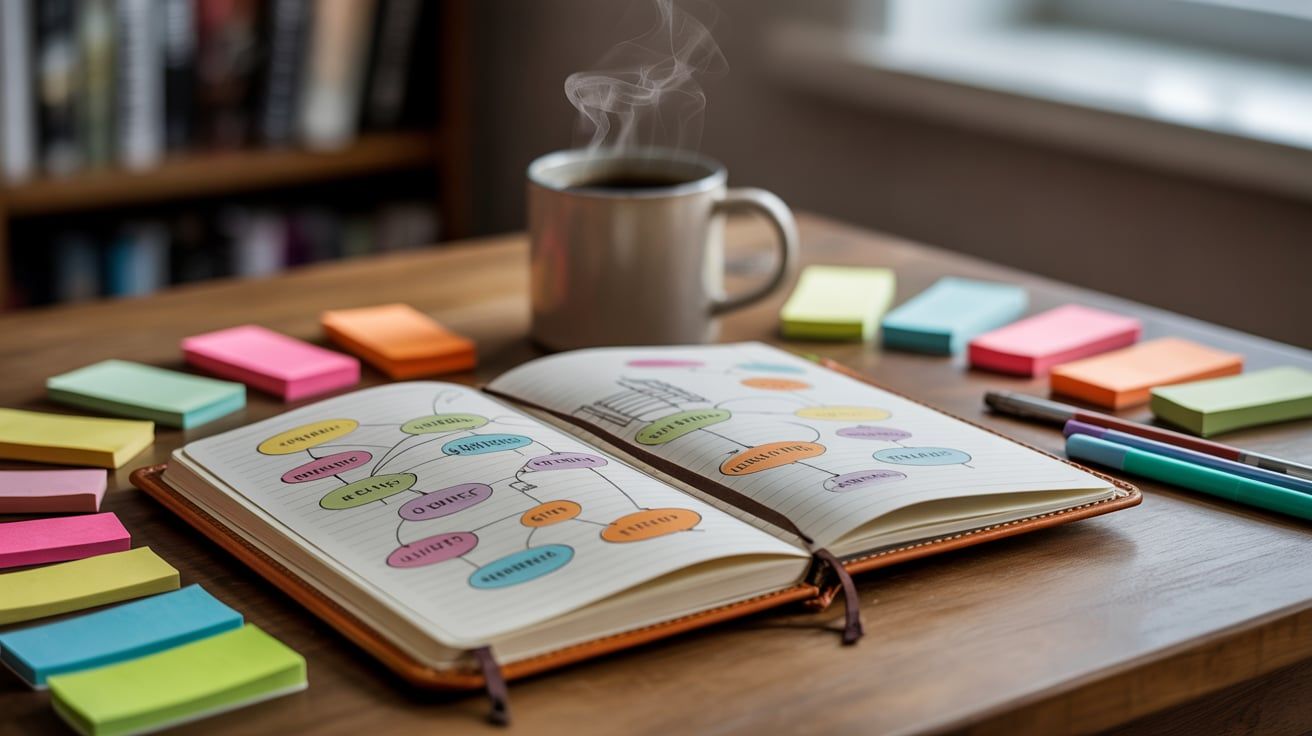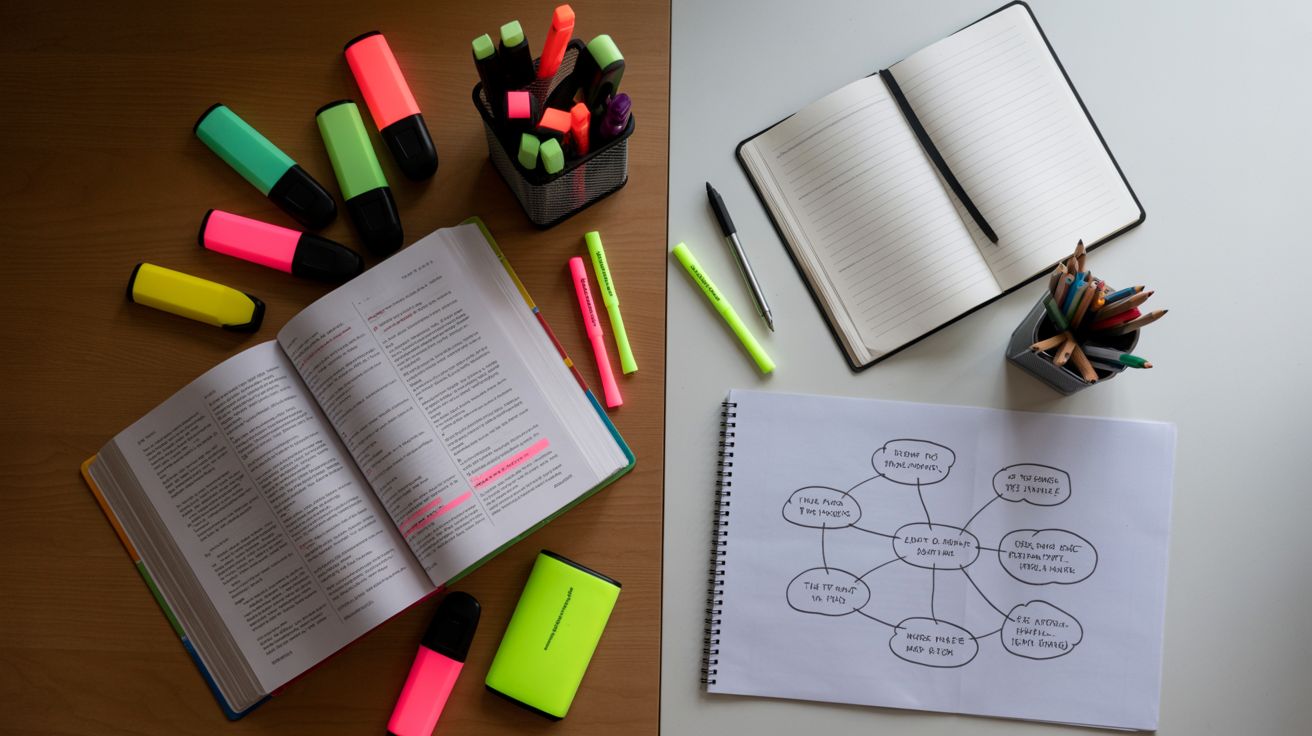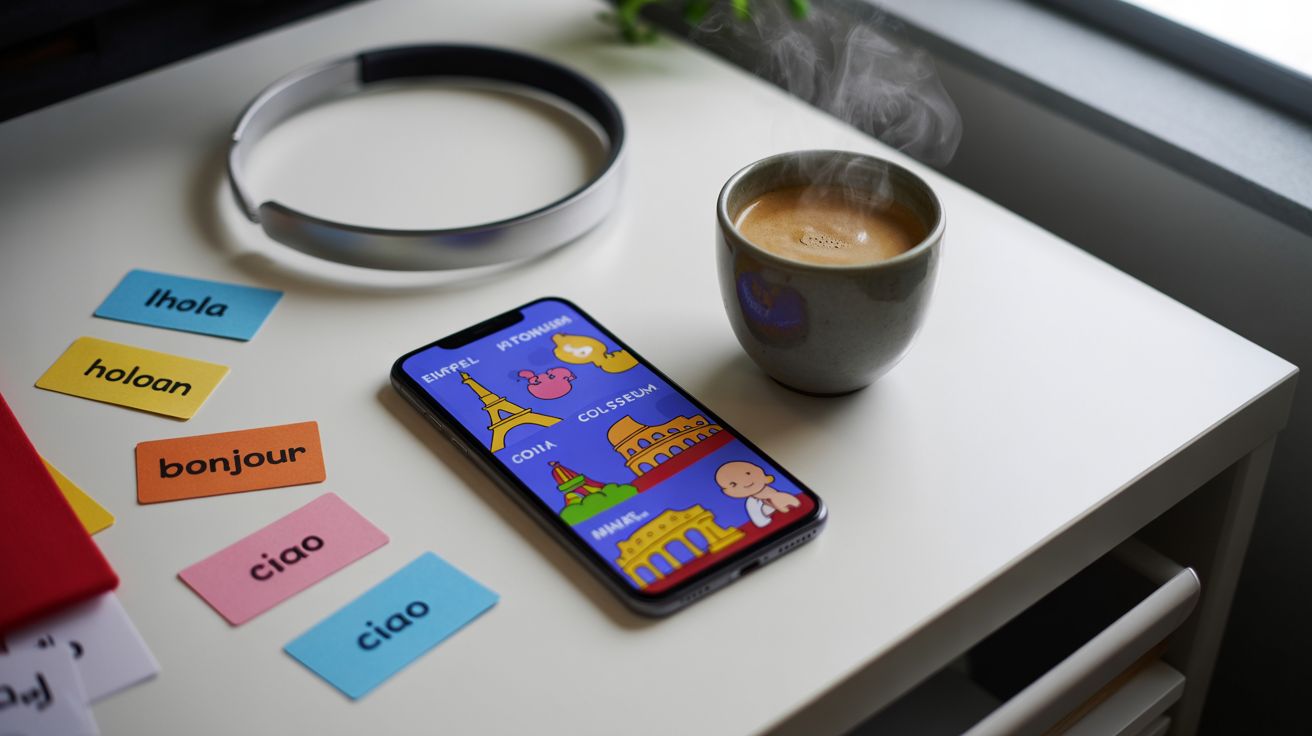The Memory Palace: How to Remember Anything Using Your House
Have You Ever Forgotten Something Important?
Imagine you're giving a presentation, and suddenly, your mind goes blank. The carefully crafted points you rehearsed vanish into thin air. Or perhaps you're taking an exam, and a crucial formula stubbornly refuses to surface from the depths of your memory. We've all been there. The frustration of forgetting something important can be incredibly disheartening, especially when it impacts our education and professional lives. But what if I told you there's a powerful technique, used by orators and scholars for centuries, that can help you remember anything you want? It's called the Memory Palace, and it's surprisingly simple to learn.
The Memory Palace, also known as the Method of Loci, is a mnemonic device that leverages your spatial memory to organize and recall information. It's based on the idea that we are exceptionally good at remembering places we know well. By associating the information you want to remember with specific locations within a familiar space, like your house, you can create a mental "map" that guides you through your memories. This technique isn't just for memorizing speeches or historical dates; it can be applied to a wide range of subjects, from scientific concepts to foreign language vocabulary, significantly enhancing your study efforts and overall knowledge retention.
What Exactly is a Memory Palace?
At its core, a Memory Palace is a mental construct of a familiar place, such as your home, your commute to work, or even a favorite park. The key is that you know this place intimately. Within this mental space, you identify specific locations, or "loci" (plural of locus), that you can use as anchors for the information you want to remember. Think of it as creating a personalized, mental filing system within a space you already know well. The more familiar you are with the location, the easier it will be to navigate your Memory Palace and retrieve the information you've stored there.
The power of the Memory Palace lies in its ability to transform abstract information into vivid, memorable images and associations. Instead of trying to rote-memorize facts, you're creating a story, a journey through your mental space, where each location holds a piece of the puzzle. This active engagement with the material makes it far more likely to stick in your long-term memory. It's a technique that taps into the brain's natural ability to remember spatial relationships and visual cues, making it a highly effective tool for learning and knowledge acquisition.
Choosing Your Palace: Your Home as a Starting Point
For beginners, your own home is the perfect place to start building your first Memory Palace. You know it intimately, from the layout of the rooms to the placement of furniture. This familiarity is crucial because it allows you to focus on associating information with specific locations, rather than struggling to remember the space itself. Start by mentally walking through your home, identifying distinct locations in a logical order. For example, you might begin at the front door, then move to the entryway, living room, kitchen, and so on. Each of these locations will become a locus in your Memory Palace.
When selecting your loci, be specific and consistent. Instead of just "the living room," choose a particular spot, like the fireplace, the coffee table, or a specific painting on the wall. The more detailed and memorable the location, the easier it will be to associate it with the information you want to remember. As you become more experienced, you can expand your Memory Palace to include other familiar places, such as your workplace, your route to school, or even fictional locations from books or movies. The possibilities are endless, limited only by your imagination.
Creating Vivid Associations: The Key to Remembering
Once you've chosen your loci, the next step is to create vivid and memorable associations between the information you want to remember and those locations. This is where your creativity comes into play. The more bizarre, humorous, or emotionally charged your associations, the more likely they are to stick in your memory. Don't be afraid to get silly and let your imagination run wild. For example, if you're trying to remember the first president of the United States, George Washington, and your first locus is your front door, you might imagine George Washington chopping down a cherry tree right in front of your door, with wood chips flying everywhere.
The key is to engage multiple senses in your associations. Visualize the scene in detail, imagine the sounds, smells, and textures. The more sensory information you incorporate, the stronger the memory will be. Also, try to make your associations interactive. Instead of just picturing George Washington standing by your door, imagine him interacting with it in some way, perhaps struggling to open it or ringing the doorbell repeatedly. This active engagement will further solidify the connection between the information and the location, making it easier to recall later. This technique is invaluable for students taking courses that require memorization.
Walking Through Your Palace: Recalling the Information
Now that you've created your Memory Palace and populated it with vivid associations, it's time to take a mental walk and retrieve the information you've stored there. Start at the beginning of your chosen route and mentally "walk" from one locus to the next, recalling the association you created at each location. As you visualize each scene, the corresponding information should come flooding back to you. The more you practice this mental walk, the stronger the connections will become, and the easier it will be to recall the information.
If you find yourself struggling to remember an association at a particular locus, don't panic. Simply revisit the location in your mind and try to recreate the original scene. You might need to add more detail or make the association even more bizarre or memorable. The key is to be patient and persistent. With practice, you'll become more adept at navigating your Memory Palace and retrieving the information you've stored there. This technique is particularly useful for remembering complex concepts or sequences of events, making it a valuable tool for anyone engaged in education or lifelong learning.
Applying the Memory Palace to Different Subjects
The beauty of the Memory Palace is its versatility. It can be applied to virtually any subject, from history and science to languages and literature. For example, if you're studying history, you could use your Memory Palace to remember the chronological order of historical events. Each locus could represent a specific year or event, and the associations could be based on key figures or details from that period. Similarly, if you're learning a new language, you could use your Memory Palace to memorize vocabulary words. Each locus could represent a different word, and the association could be based on a visual image or a mnemonic device that links the word to its meaning.
In science, you could use your Memory Palace to remember the steps in a scientific process or the different parts of an anatomical structure. In literature, you could use it to remember the plot of a novel or the key themes in a poem. The possibilities are endless. The key is to adapt the technique to the specific subject matter and to create associations that are meaningful and memorable to you. By actively engaging with the material and transforming it into vivid, visual images, you can significantly enhance your understanding and retention, making your study sessions more effective and enjoyable. This is especially helpful when tackling challenging courses.
Tips and Tricks for Building a Better Memory Palace
To maximize the effectiveness of your Memory Palace, there are a few tips and tricks to keep in mind. First, be consistent with your chosen route. Always start at the same point and follow the same sequence of loci. This will help you to establish a strong mental map and make it easier to navigate your palace. Second, use vivid and detailed imagery. The more sensory information you incorporate into your associations, the more memorable they will be. Don't be afraid to get creative and let your imagination run wild.
Third, review your Memory Palace regularly. The more you practice walking through it and recalling the associations, the stronger the connections will become. Try to review your palace at least once a day, or more often if you're preparing for an exam or presentation. Finally, don't be afraid to experiment with different techniques and approaches. The Memory Palace is a personal tool, and what works for one person may not work for another. Find what works best for you and adapt the technique to your own learning style and preferences. With practice and dedication, you can build a powerful Memory Palace that will help you remember anything you want.
Beyond Your Home: Expanding Your Mental Landscape
While your home is a great place to start, don't limit yourself to just one Memory Palace. As you become more experienced, you can expand your mental landscape to include other familiar places, such as your workplace, your commute, or even fictional locations from books or movies. The more Memory Palaces you have, the more information you can store and the more versatile your memory skills will become. You can even create different Memory Palaces for different subjects, allowing you to organize your knowledge in a more structured and efficient way.
For example, you might have one Memory Palace for history, another for science, and another for languages. Each palace would be tailored to the specific subject matter, with loci and associations that are relevant and meaningful. This approach can be particularly helpful for students who are taking multiple courses simultaneously. By creating separate Memory Palaces for each course, you can avoid confusion and ensure that you're able to recall the information you need when you need it. The key is to be organized and to maintain a clear mental map of each palace. With practice, you'll be able to navigate your mental landscape with ease and access the information you need at a moment's notice. This is a skill that will benefit you throughout your education and career.
Unlock Your Memory Potential Today
The Memory Palace is a powerful tool that can transform the way you learn and remember information. By leveraging your spatial memory and creating vivid associations, you can unlock your memory potential and achieve academic and professional success. It's a technique that has been used by orators and scholars for centuries, and it's just as relevant and effective today. So, why not give it a try? Start by building your first Memory Palace in your own home and see how it can improve your memory and enhance your learning experience. The journey to improved knowledge starts with a single step, or in this case, a single mental walk through your Memory Palace.
Ready to take control of your memory and unlock your full learning potential? Explore our website for more resources, tips, and techniques on memory improvement and effective study strategies. We offer a range of courses designed to help you master the Memory Palace and other mnemonic devices, empowering you to excel in your education and achieve your goals. Don't let forgotten information hold you back. Start building your Memory Palace today and discover the power of a truly unforgettable mind!



